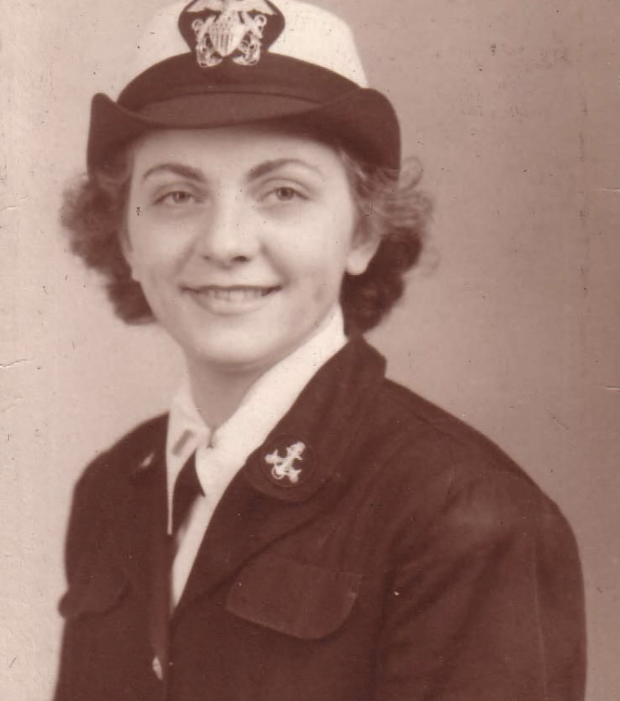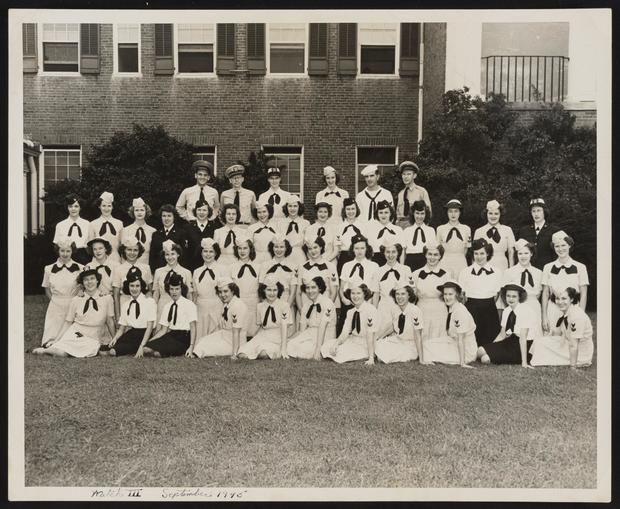Women codebreakers knew some of the biggest secrets of WWII — including plans for the D-Day invasion. But most took their stories to the grave.
Before 150,000 soldiers landed on the beaches of Normandy for the military operation that would later be known as D-Day, few people outside the military knew what was in the works.
One of the rare people to know about the operation in advance was Jean Sims, 22, a codebreaker who had noticed the use of the phrase "Overlord" in the communique she decoded daily. Sims was one of thousands of "Code Girls," young women who volunteered to enlist with the U.S. Navy and worked to encode messages sent throughout the military and decode messages intercepted from enemy forces.
"She kept noticing, over and over and over again, this term, which we all know now: Overlord. She picked up on it, she understood that it was something really important, and she understood that it was concerning plans for an upcoming invasion," said Monica Mohindra, the director of the Veterans History Project at the Library of Congress, where Sims' memoir is stored.

"What she didn't know at the time was what Overlord meant entirely, and she also didn't realize at the time that other than the top brass, she was one of the very few people in the world to know about D-Day before it happened," Mohindra said.
On D-Day, over 150,000 Allied soldiers stormed Normandy, France. The landings at Normandy, which occurred 80 years ago today, were the beginning of "Operation Overlord," which would eventually see the Allies establish a foothold along France's coast. That foothold allowed American, British and Canadian forces to establish a second front against the German army and advance into the Nazi-occupied nation, according to the Imperial War Museum.
Sims' story was collected as part of the Veterans History Project at the Library of Congress. Mohindra said Sims' story is just one of "thousands" of D-Day recollections in the projects' archive. The archive is accessible to the public and includes unedited diaries, journals, interviews, video and audio footage that help readers understand the "raw perspective and emotion" of the veterans who served, Mohindra said.
Decoding messages "from ships and stations all over the world"
The "Code Girls" were members of the Women's Reserve, also known as WAVES, during World War II. According to Sims' journal, they handled various degrees of classified messages through the Navy Communications System. Sometimes, the work involved decoding messages sent from "ships and stations all over the world," per Sims' diary. Other times, they encoded messages to be sent to "addresses all over the world, by radio, by courier, by mail."
"Our objective was: get the messages through quickly and accurately, while maintaining security: that is, making sure that the enemy could not decrypt them and use the contents to help them sink our ships and kill our men," Sims wrote. "The enemy knew we were there and they would have liked to find out what we were doing. We had to keep our knowledge secure from them."
Work also included decoding enemy messages that had been intercepted. Sims wrote in her journal that she and her fellow codebreakers worked at the Naval Communications Command Annex in Washington, D.C. All of the communications work was done in the sprawling building's sixth wing. Different rooms were devoted to decoding and encoding messages of different classification levels, and pneumatic tubes connected these rooms to what Sims called the "Main Coderoom" so messages could be easily sent back and forth.

In one notable incident, Sims and a commanding officer were able to save a convoy at sea. Convoys might be told to change course because of icebergs or enemy forces in the area. A message came in telling the convoy leader to change course immediately, but Sims noticed something strange about the call sign attached to the message and flagged it to a superior, who escalated her concern.
"After a while, Mr. R came back and said 'You were right. We saved the convoy,'" Sims wrote. "There was no telling who was aboard those ships or what they were carrying: Maybe food for England, or ammunition, guns, men. It was just part of our routine and nobody knew about it but Mr. R and me, and whoever corrected the call sign."
Sims worked with the Code Girls before seeing messages about Operation Overlord. In Sims' diary, mentions of Overlord are scant, and she admitted to not understanding why the term started to appear in so many messages. Messages mentioning the operation were "short and doubly encoded," Sims wrote, and "obviously used code words."
Despite being the largest air, land and naval invasion in history, details of D-Day were kept secret from many. Surprise was essential to the plan, and Allied forces went as far as staging deceptive, false military campaigns elsewhere in Europe to distract the German army.
Stories brought "to the grave"
Mohindra said that the work Sims and her fellow "Code Girls" did during the war was classified, with Sims writing in her diary that she and her compatriots were warned that consequences for breaking confidentiality included being court-martialed, imprisoned or even sentenced to death as a traitor.
Sims noted that diaries were forbidden during their service, and said that she never kept one. The journal shared with the Veterans History Project was written after the Code Girls' work was declassified, 70 years after World War II ended. Sims died in 2017 at 95 years old, leaving the journal and other files that she donated to the Veterans History Project as the only record of her codebreaking work.
When the Veterans History Project held a reunion for the surviving Code Girls and their loved ones in March 2019, it was the first time some family members understood what they had done during the war, Mohindra said. Many of their families thought the "Code Girls" had been administrative secretaries or doing some other tasks needed by the war effort, but they didn't understand the full impact of their codebreaking work.
"Many of these women took their stories to the grave," Mohindra said.
- In:
- World War II
- U.S. Navy
- D-Day
- United States Military
- United States Navy
Kerry Breen is a news editor at CBSNews.com. A graduate of New York University's Arthur L. Carter School of Journalism, she previously worked at NBC News' TODAY Digital. She covers current events, breaking news and issues including substance use.
TwitterDisclaimer: The copyright of this article belongs to the original author. Reposting this article is solely for the purpose of information dissemination and does not constitute any investment advice. If there is any infringement, please contact us immediately. We will make corrections or deletions as necessary. Thank you.



